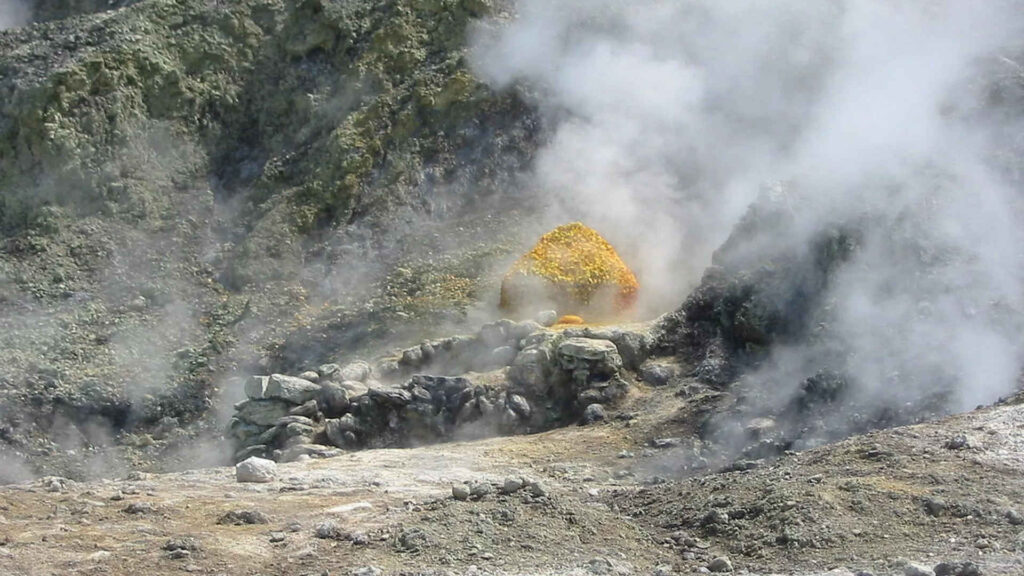
The Phlegraean Fields, or Campi Flegrei, a vast volcanic region near Naples, Italy, renowned for its geothermal activity and striking landscapes, is drawing heightened attention from scientists due to recent rumblings.
This supervolcano, one of the top eight global emitters of volcanic carbon dioxide, has sparked concern within the scientific community.
Recent research led by Gianmarco Buono of Italy’s National Institute of Geophysics and Volcanology reveals that 20% to 40% of the carbon dioxide emissions in the area come from calcite dissolving in the surrounding rocks, while the majority—60% to 80%—originates from subterranean magma. Of particular interest is the Solfatara Crater, which has been steadily releasing increasing amounts of gas for nearly two decades, capturing the attention of both researchers and local residents.
Supervolcano eruptions are capable of ejecting over 1,000 cubic kilometres of material, creating massive calderas that can span dozens of kilometres. Such events have the potential to trigger catastrophic environmental and climate disruptions on a global scale.
With volcanic activity in the region dating back 40,000 years, the Phlegraean Fields have a long and tumultuous history. Its most recent eruption occurred in 1538. Unraveling the mysteries beneath this volcanic system is critical, as understanding its behaviour is essential for mitigating the potential risks posed to humanity and the planet.
This is a Super Volcano, and will make Vesuvius look like a minor Earth farts when it blows!
Pompeii and Herculaneum will once again be re-buried, with Naples sharing the same fate in these modern times.
Now…imagine IF Taupo, Yellowstone and Campi-Flegri all blew at the same time….using directed energy neutrino seismic weaponry to do so!
Reminds me of Thera
Santorini
And the sea peoples
What we may hopefully not experience shortly
Invasion
Nuclear war in the Northern hemisphere
1200BC junction in time
Check this out…with regards to the last item causing massive Earthquakes.
(Note- it was supposedly a neutrino-based weapon that accidently triggered the Christchurch Earthquakes…
https://halturnerradioshow.com/index.php/news-selections/world-news/mysterious-cosmic-rays-blast-earth-with-record-breaking-energy
If your pets are behaving strangely like the politicians, that’s the reason why!!!
Mix this ‘phenome’ with 5G, and the results on the Covid Nano-Tech floating around in everyone’s body will make for a truly memorable Christmas and New Years!!!